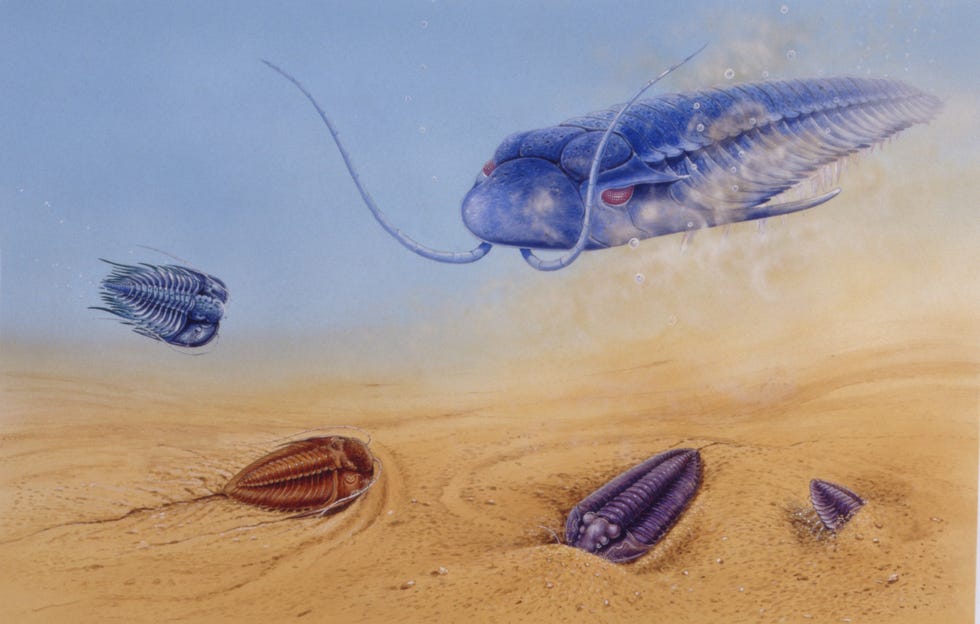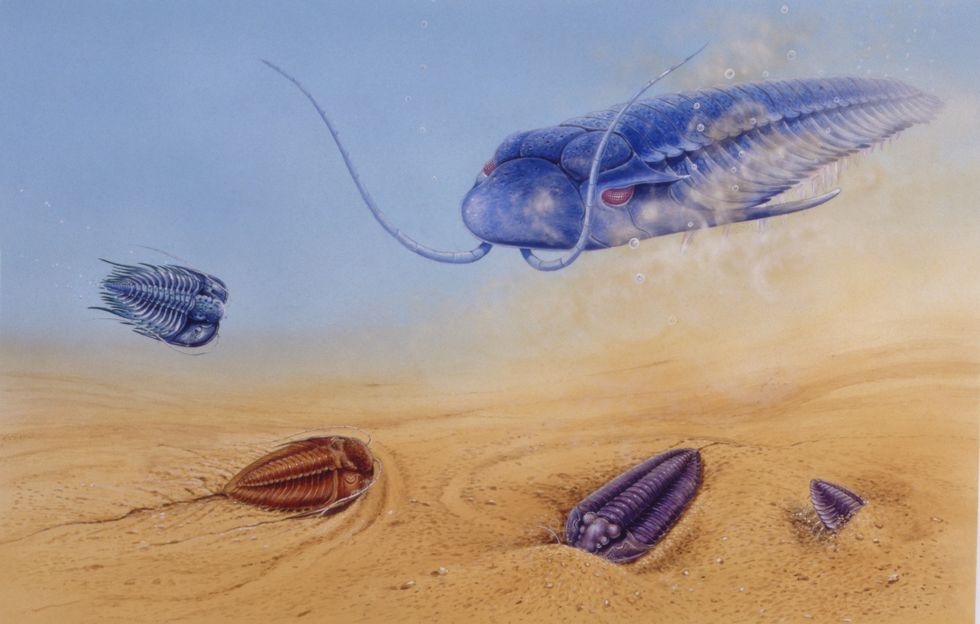

DE AGOSTINI PICTURE LIBRARYGetty Images
- New research published in the journal Palaeogeography, Palaeoclimatology, Palaeoecology makes a strong case for same-species cannibalism among trilobites.
- Dubbed “Cambrian carnage” by researchers, the working theory is that Redlichia rex, a giant trilobite species, was in the habit of eating its own kind.
- If accurate, this beats out the previous record for the earliest known cannibalism by around 5o million years.
The world’s earliest known case of cannibalism occurred over 500 million years ago in the depths of the early oceans.
At least, that’s what fossil evidence has recently shown us. According to new research, Redlichia rex, a giant species of trilobite, was in the habit of taking chunks out of another trilobite species, Redlichia takooensis. But what’s surprising about this new discovery is that it appears R. rex also ate other members of its very own species, engaging in some gnarly prehistoric cannibalism.
Researchers came to this conclusion after finding what could best be described as “bites” on some R. rex specimens. Similar to crabs, trilobites had a calcite shell that acted as their armor, and is what we typically see when we look at trilobite fossils. While this hard shell was meant to protect R. rex, it didn’t always stop other trilobites of the same species from chomping on each other.
The fossils that were analyzed for this paper—published earlier this month in the journal Palaeogeography, Palaeoclimatology, Palaeoecology—were from the Emu Bay Shale on Australia’s Kangaroo Island. In total, researchers studied 38 injured trilobite fossils that featured healed thoracic injuries. Due to the positioning of the injuries, the team theorized that perhaps R. rex preferred to attack its prey from behind.
The researchers also posited that some prey specimens may have presented the posterior portion of their trunks toward the predator when they felt threatened, or were trying to escape predation due to injury marks along their bodies. Additionally, researchers have found fossilized excrement that also contains trilobite shells, strengthening the cannibalism theory (which, while strong, is still merely a theory).
If the researchers are correct, though, this marks the earliest instance of arthropod cannibalism we’ve seen yet. Previously, it was thought that the first occurrences of cannibalism happened approximately 450 million years ago in the Ordovician period. And the researchers believe that cannibalism likely happened even earlier—we just haven’t found evidence in the fossil record to prove it. At least, not yet.
This content is created and maintained by a third party, and imported onto this page to help users provide their email addresses. You may be able to find more information about this and similar content at piano.io
